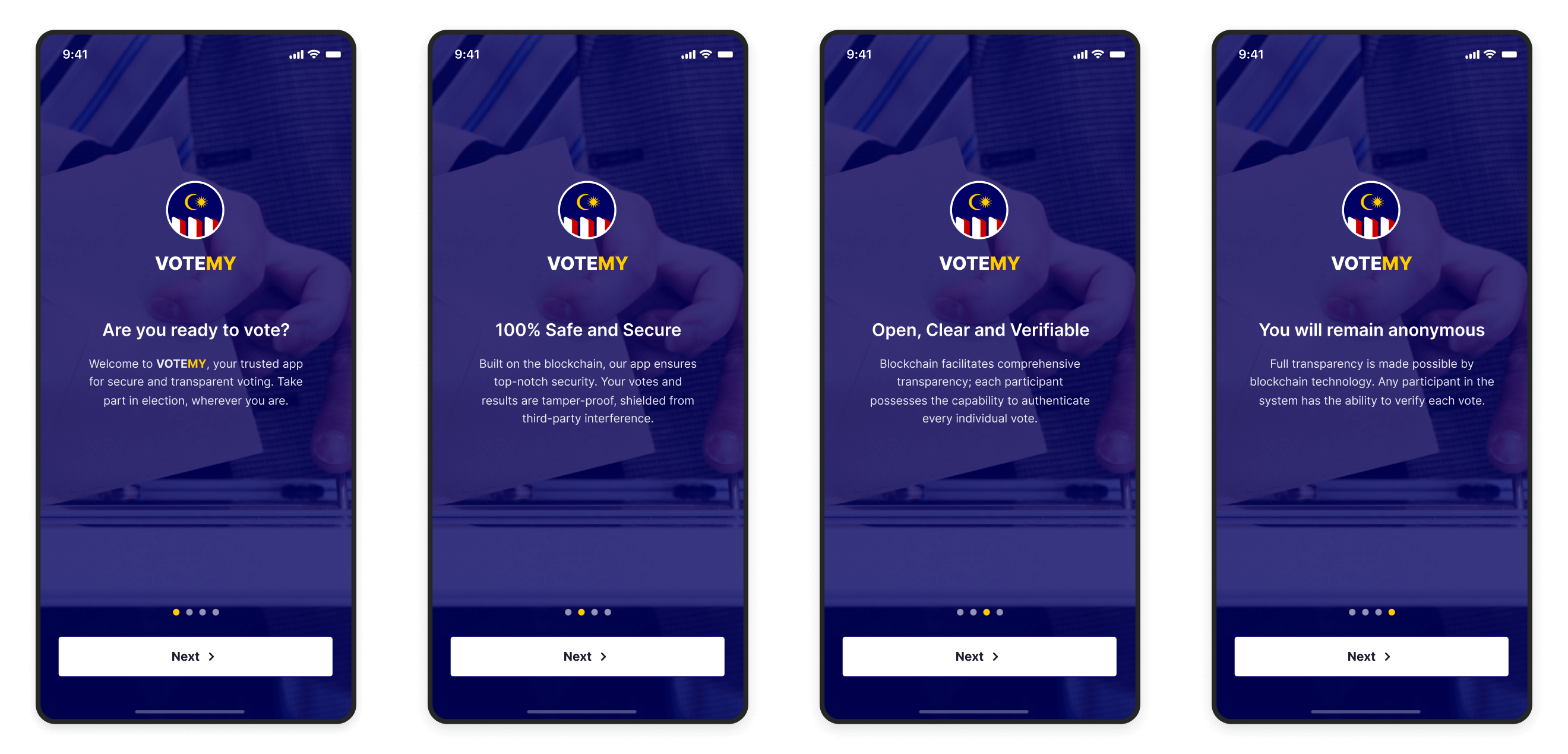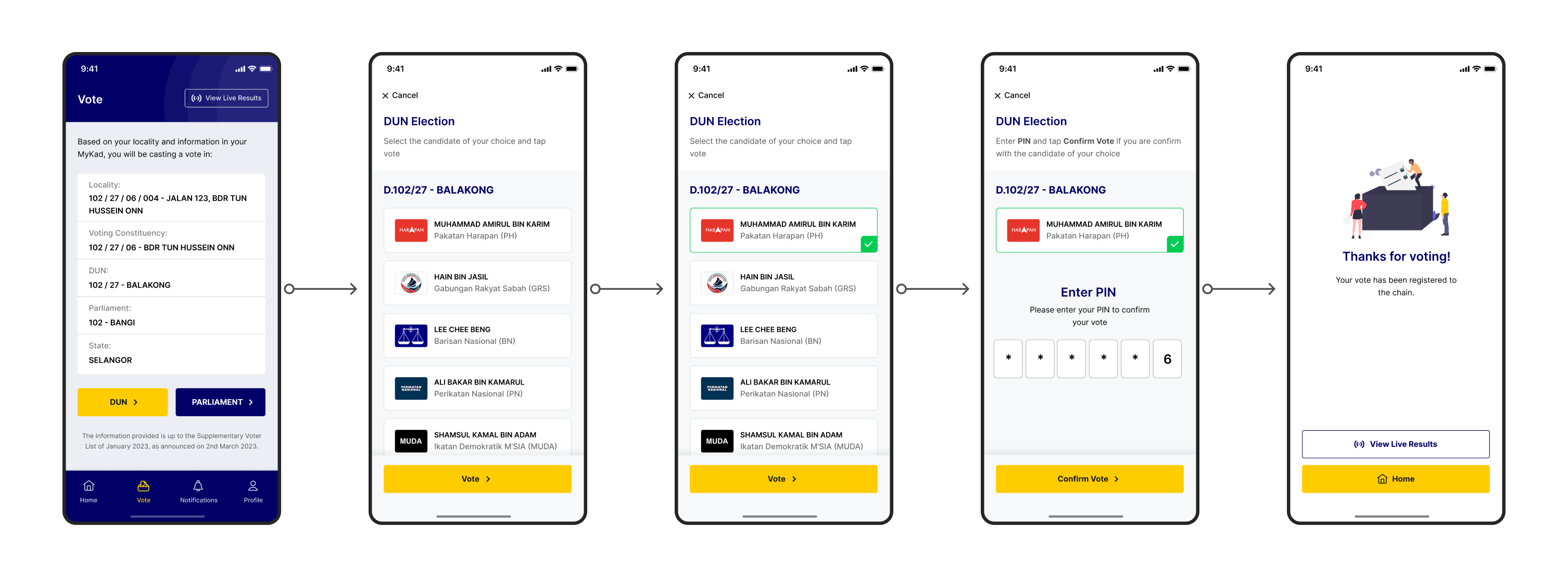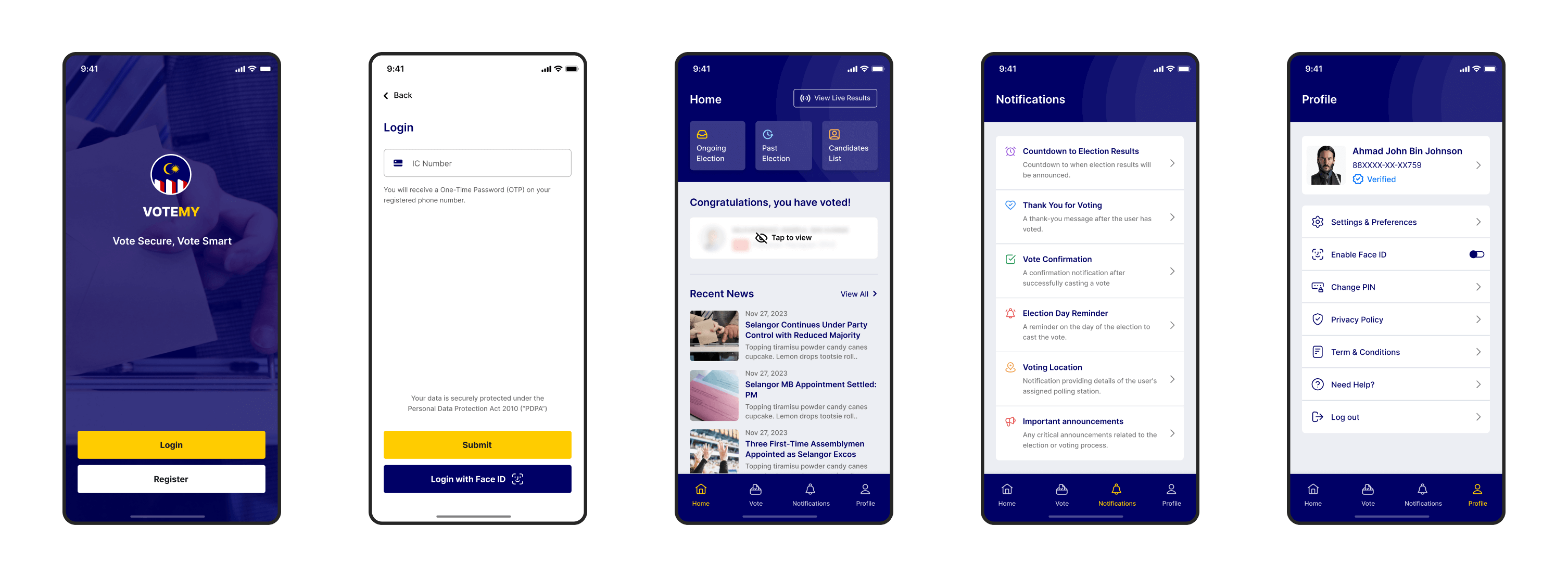VoteMy: A Blockchain Voting App Case Study
Empowering Democracy through Secure Blockchain Voting
*What you're about to see is a case study I've compiled for a design challenge and a product design project. Please note that it's not a fully functional product yet.Overview
In a world where trust and transparency are vital to the democratic process, blockchain technology emerges as a beacon of hope.
This case study explores how our blockchain-based voting app revolutionized the way elections are conducted, ensuring security, integrity, and inclusivity.
The Problem
Traditional voting methods are plagued by various challenges, including inefficiencies, security vulnerabilities, and limited accessibility, which hinder the integrity and inclusivity of the democratic process.
The Goals
Designing a blockchain voting app is a significant step in redefining the democratic process. In this discussion, we'll explore the goals guiding the development of this secure, transparent, and user-friendly system for elections. These also could include:
- To ensure a secure and tamper-resistant environment for vote recording. When a vote is on the blockchain, it's highly resistant to changes or manipulation without network participants' agreement, boosting trust in the voting process.
- To create a fresh voting experience by utilizing online and mobile applications. This inventive approach aims to revolutionize the conventional voting process, making it more accessible, convenient, and user-friendly.
In conclusion, these goals ensure a secure and tamper-resistant voting environment. The blockchain-based system makes altering votes nearly impossible without network agreement, boosting trust in elections.
The Approach
The design approach for a blockchain voting app is revolutionizing elections, blending technology and democratic values. In this case study, we'll explore the core principles guiding this app's development, aiming for secure, transparent, and accessible elections.
The User Flow
The user flow in a blockchain voting app is like a digital path for voters during an election. It's central to the app's design, ensuring a smooth, secure, and trustworthy voting experience. The user flow, demonstrating simplified voting and increased trust in democracy.
Simplifying Voter Registration
The primary objective is to create a user-friendly registration process that caters to individuals of all ages (eligible to vote). The aim to make the registration process accessible and straightforward, ensuring that voters from different generations and backgrounds can easily navigate it.
Ensuring Secure Vote Casting
This streamlined process has been designed to ensure that casting a vote is both easy to understand and highly secure for all users. By breaking down the steps involved, the aim is to make the voting experience as straightforward as possible.
Additional Screens: Beyond Registration and Voting
In the context of a blockchain voting app, exploring additional screens goes beyond the core processes of registration and casting votes. These screens encompass various functionalities and features that enhance the overall user experience.
Final Thoughts
In summary, this case study underscores the approach to designing a blockchain-based voting app with a focus on security, transparency, and user-friendliness. It highlights how blockchain can enhance the democratic process through user registration, identity verification, and voting. The objective is to create an accessible, trustworthy, and inclusive electoral system for the future.




